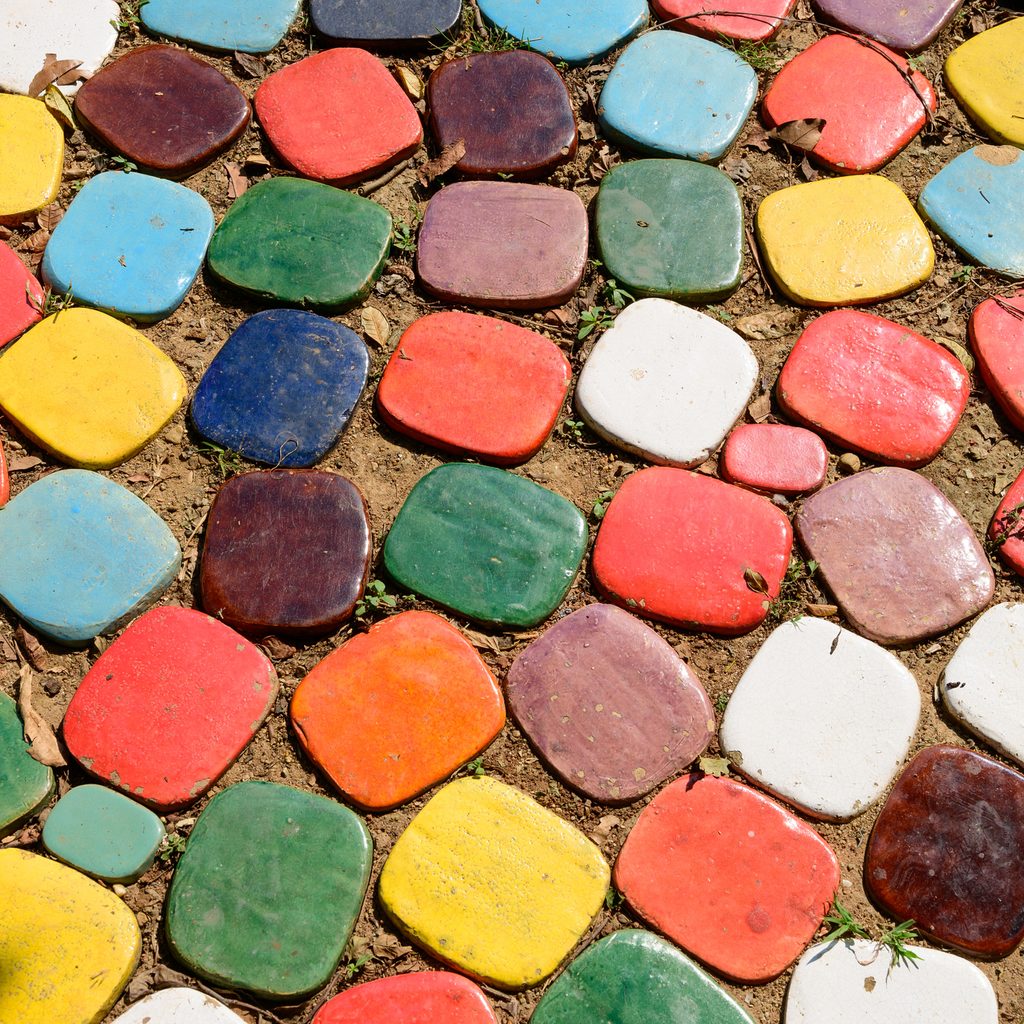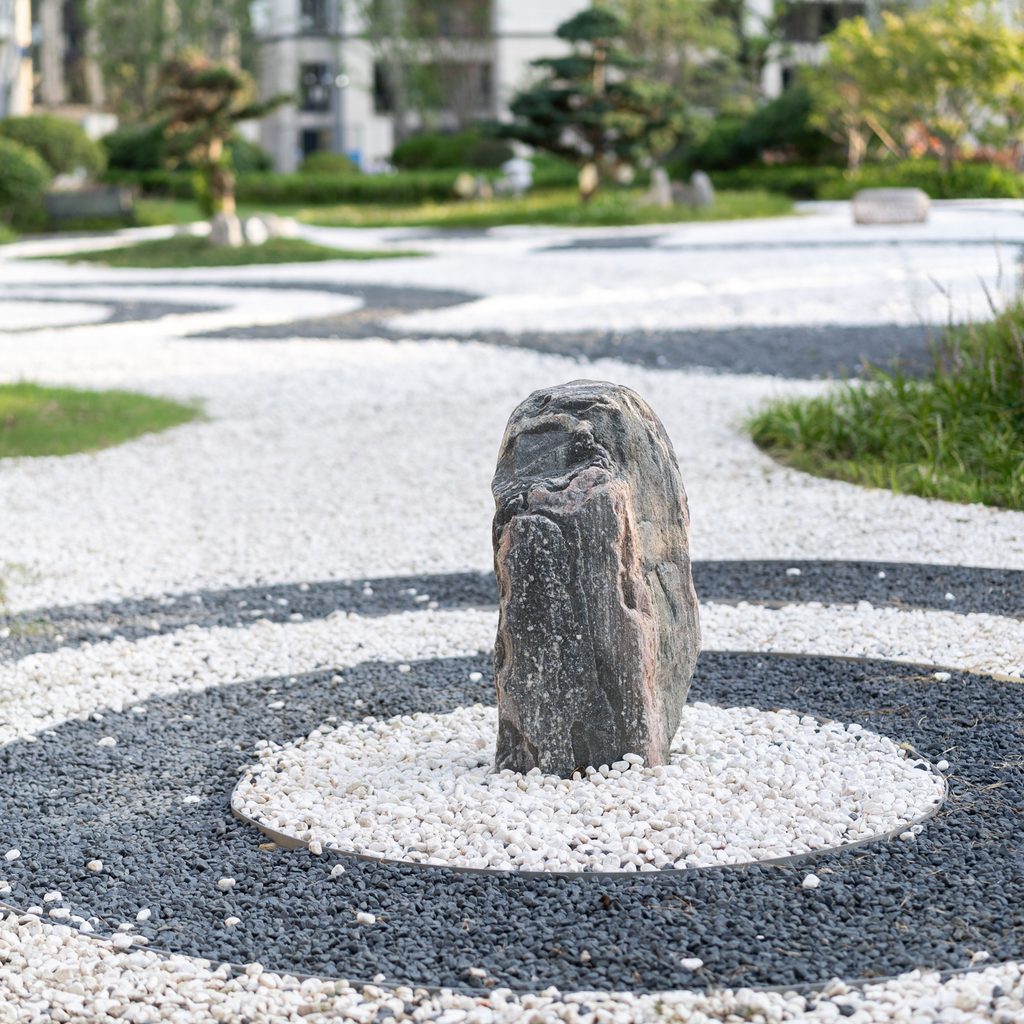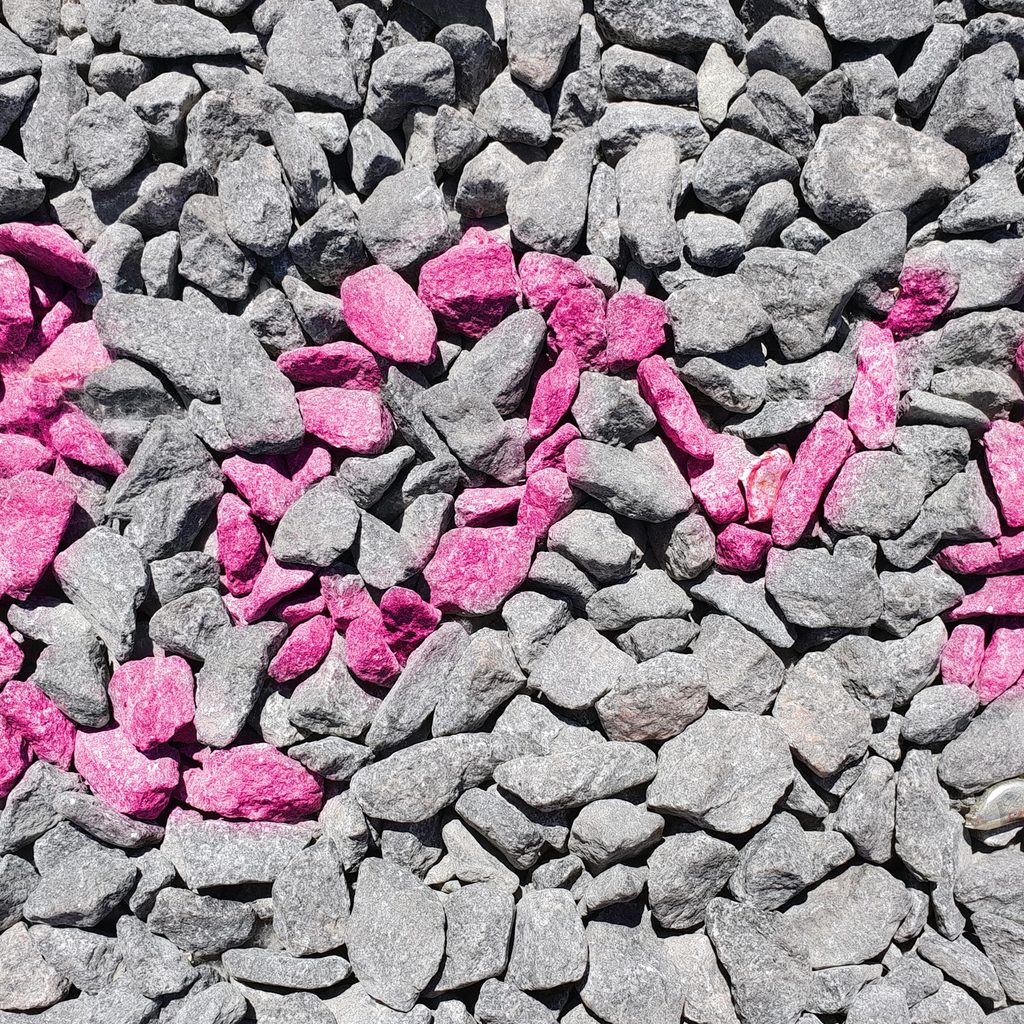Many gardens are beautiful all on their own, with gorgeous flowers and ripe fruit offering plenty of colors. If you don’t have any ground cover in your garden, though, you might have some bare earth that isn’t quite as colorful and pretty. If you’re in the mood to design your garden, then why not decorate that space with some rocks? You can use many small stones, several large ones, or a combination of both. There are colorful, monochromatic, and natural colored rocks just waiting to be used to create patterns and designs!
1. Geometric
The simplest type of geometric pattern is squares, and square stones are easy to find. Choose flat square stones in a color you like, and lay them out in a line. Space them out a bit, and fill in around them with smaller stones. This pattern works especially well for walkways. For a more complicated geometric pattern, you can use hexagons to form a honeycomb shape. You can mix and match shapes, but try to avoid having more than two or three, as it can quickly become busy.

2. Mosaic
Mosaics are a variation of geometric patterns that play more with colors. Your mosaic can be a picture or abstract. Select several sizes and colors of square and rectangular stones. Situate them next to each other, so they form the picture or pattern you want. Alternatively, if you can’t find the sizes you want, you can outline the pattern you want in white or black stones. Then, fill in the sections with smaller stones in the colors you want.
3. Waves
Wave patterns are best made with smaller stones in at least two colors. It’s easiest if you outline the pattern with rocks first, then fill in the areas. Divide the space you have roughly in half, using a curly, wavy line. It doesn’t need to look exactly like a wave. You can use blue for a more classic, oceanic appearance. Picking two colors that have a high contrast, such as one light color and one dark color, makes this pattern really pop!
4. Rings
Rings are a great choice if you have lots of space between plants. Form a circle with a plant in the center and then lay other circles around it, so they form concentric rings. This pattern is particularly fun if you have multiple colors of small stones, so each ring can be a different color. If you only have two colors, you could alternate them to form a color pattern. If you have multiple shades of the same color, you can even form a delightful gradient using this pattern.

5. Footprints
If you have an empty walkway, then footprints can be a fun addition. An easy way to do this is to find footprint-shaped stones, set them in your walkway, and then spread smaller stones around them. If footprint-shaped stones aren’t to your liking, then you can trace footprint shapes and fill them in with one color of small stone and surround them with another color.
Smaller stones are easier to dislodge, though, which can result in the pattern becoming muddled. Digging a small hole, so the footprint stones are on a slightly lower level, can help. Alternatively, you can use concrete to secure the smaller stones in place, creating your own footprint-shaped stepping stones.
6. Words
There are plenty of stone decorations with writing on them, from simple, single-word designs to more complicated, custom ones. However, you can easily use stones to write words or phrases in your garden. This design works best if you have a section of empty space toward the front of your garden.
Try to keep your writing simple, so each letter can be large and clear. Smaller text is tricky to create and difficult to read. Stick to one- or two-word phrases, like “Love,” “Family,” or “Go away.” Lay out a single color backdrop, and choose a color that stands out against it for your writing.

7. Spirals
Spirals can be a bit tricky, but if you’re patient, then they can be truly stunning! You can make several smaller spirals or make one large one with a plant in the center. The thinner your lines are, the more difficult it is to keep your lines even. Instead, opt for thicker lines that are easier to manipulate. You can even play with height, using taller rocks to form the spiral and smaller stones to fill in the gaps between lines. Using larger rocks and soil, you can even form a three-dimensional spiral, like an herb spiral.
Filling the empty spaces in your garden with colorful rocks can be fun in and of itself, but with these seven ideas, you can turn it into a work of art. If you’re concerned about the details, then sitting down with a piece of paper and pencil or markers can help quite a bit. The important part of decorating your garden is to have fun with it. As long as you’re happy with how it looks, then you’ve succeeded. Remember, garden stone designs aren’t permanent. If you change your mind about how it should look, you can gather up all the stones and start over.


